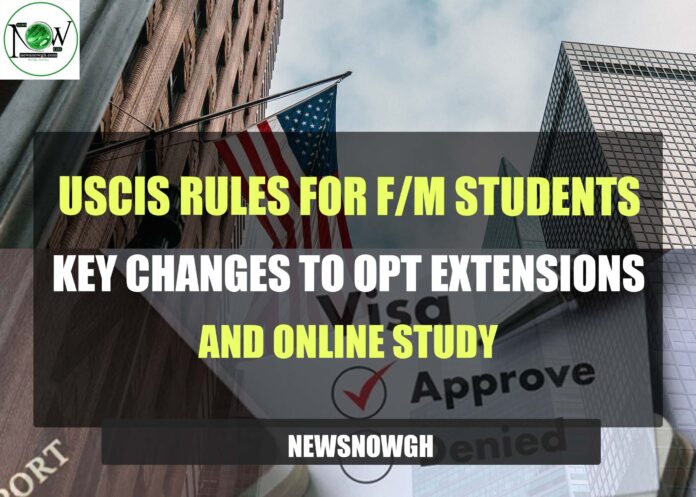USCIS Rules for F/M Students: Key Changes to OPT Extensions and Online Study
USCIS has clarified eligibility for STEM OPT extensions, online study rules, school transfers, and study abroad procedures in its updated advice for F/M nonimmigrant students. The revised regulations provide international students with more freedom and clarity and go into effect immediately.
The Policy Manual for F/M nonimmigrant students has been updated by U.S. Citizenship and Immigration Services (USCIS). The modifications center on topics such as school transfers, online studies, extensions of optional practical training (OPT), and other related matters. Below is a summary of the main modifications:
Understanding F and M Visas
International students who wish to study in the United States are served by the F and M visas. You must enroll in one of the following programs to be eligible for an F-1 or M-1 visa.
- A course of study in academia
- A course on language acquisition
- An apprenticeship program
To guarantee that students are enrolled in accredited educational courses, these visas are necessary for individuals wishing to study in the US.
Important OPT Extension Updates
STEM OPT Extension Eligibility: USCIS has revised its guidelines on the STEM fields—science, technology, engineering, and mathematics—for when students are eligible for optional practical training (OPT) extensions.
After completing their degrees in certain areas, students may be eligible for extended OPT, which gives them more time to obtain real-world experience related to their field of study.
Distance Learning and Online Study
Flexibility in Online Learning: Under the new guidelines, students who take a class online or through distance learning can count one class or three credits (or the equivalent) toward their entire course of study each academic session. This is true as long as finishing the degree program depends on passing the online course.
Grace Period and Transferring Schools
Simpler School Transfers: Students may now move between schools certified by the Student and Exchange Visitor Program (SEVP) and U.S. Immigration and Customs Enforcement (ICE) at the same or different educational levels. This gives students more freedom to switch up their course of study.
Extended Grace Period: Students have 60 days after post-completion OPT ends to adjust their studies, transfer to another school accredited by SEVP, or apply to USCIS to change their status from nonimmigrant to immigrant.
Considerations for Studying Abroad
Retaining Active Status: If a study abroad program lasts for fewer than five months, students can continue to be active participants in the Student and Exchange Visitor Information System (SEVIS). Students must obtain a new Form I-20, Certificate of Eligibility for Nonimmigrant Student Status, to maintain their status for programs that last longer than five months.
Technical Adjustments
Corrections to the Application Period: The update contains a few small tweaks as well as technical fixes about the application period for STEM OPT extensions.
Date of Implementation and Effect
These revised guidelines apply to all requests submitted on or after the publication date, and they take effect immediately. This implies that the benefits of these improvements will be felt right away by international students.
Final Words
All things considered, these revisions give F/M nonimmigrant students more flexibility and clarity, which facilitates and manages their academic path in the US.
Students and educational institutions can consult Volume 2, Part F, of the USCIS Policy Manual for additional information.
Follow us on Newsnowgh.com to stay updated on the latest information regarding work permits, visa application processes, paths to permanent residency, and visa-sponsored employment.


